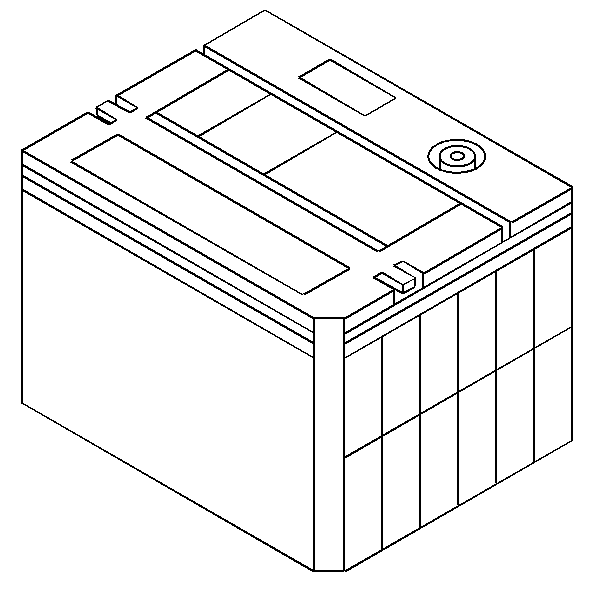Caution: Batteries generate hydrogen gas, which is extremely flammable and may
explode violently if ignited by a spark or a flame. Battery acid is extremely
corrosive and causes severe personal injury if the acid comes into contact
with the skin, and blindness if the acid comes into contact with the eyes.
In order to avoid severe personal injury, use extreme caution
when servicing the battery or battery-related components.

The maintenance free battery is standard. There
are no vent plugs in the cover. The battery is completely sealed except for
two small vent holes in the sides. These vent holes allow the small amount
of gas that is produced in the battery to escape.
The battery has a "thermal blanket" installed on it. The
blanket provides thermal protection to the battery. If the O.E. battery needs
to be replaced and the replacement battery does not have the blanket installed,
remove the thermal blanket from the O.E. battery and install it on the replacement
battery.
- The battery has three functions as a major source of energy:
| • | Alternate source of energy with generator overload |
- The battery specification label contains information about the
following:
| • | The reserve capacity rating |
| • | The original equipment (O.E.) model number |
| • | The recommended replacement model number |
| • | The cold cranking amps (CCA) |
Important:
| • | Disconnecting the negative battery cable from the battery is recommended
when performing many repair procedures. When this is done certain memory functions
are lost, such as radio and clock presets. Devices are available that eliminate
the memory loss of the radio and the clock by providing just enough current
to keep the memory alive, but not enough to cause a shock or burn hazard if
contact is made with a current carrying lead or terminal. |
| • | A memory saving device can supply enough current to deploy the
supplemental inflatable restraint (SIR) air bag which may cause personal injury
or the otherwise unneeded SIR system repairs. Therefore, always reference
the appropriate service manual procedure for the vehicle system being serviced.
If specifically directed by the service procedure for the component(s) being
serviced, disable and enable the SIR system as outlined. Refer to Section
9J. |

